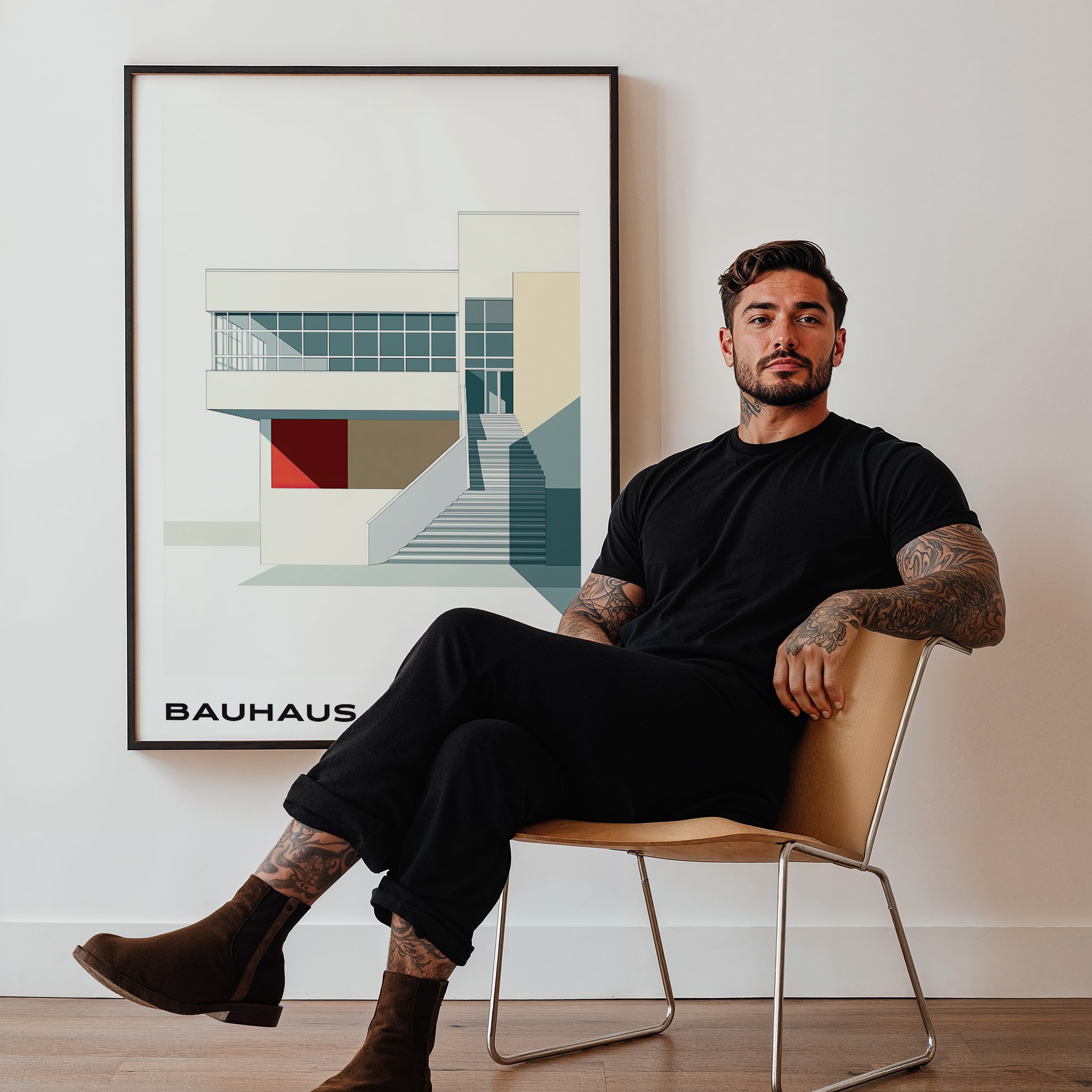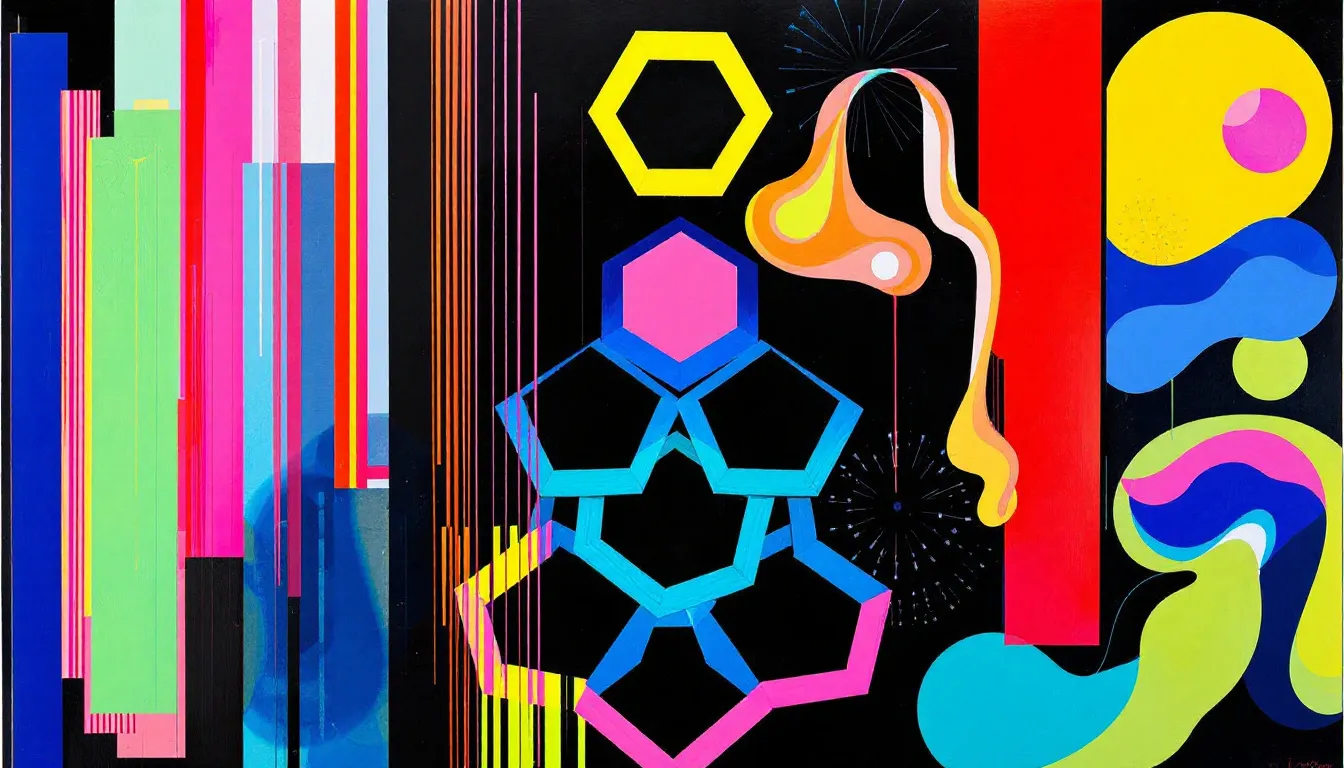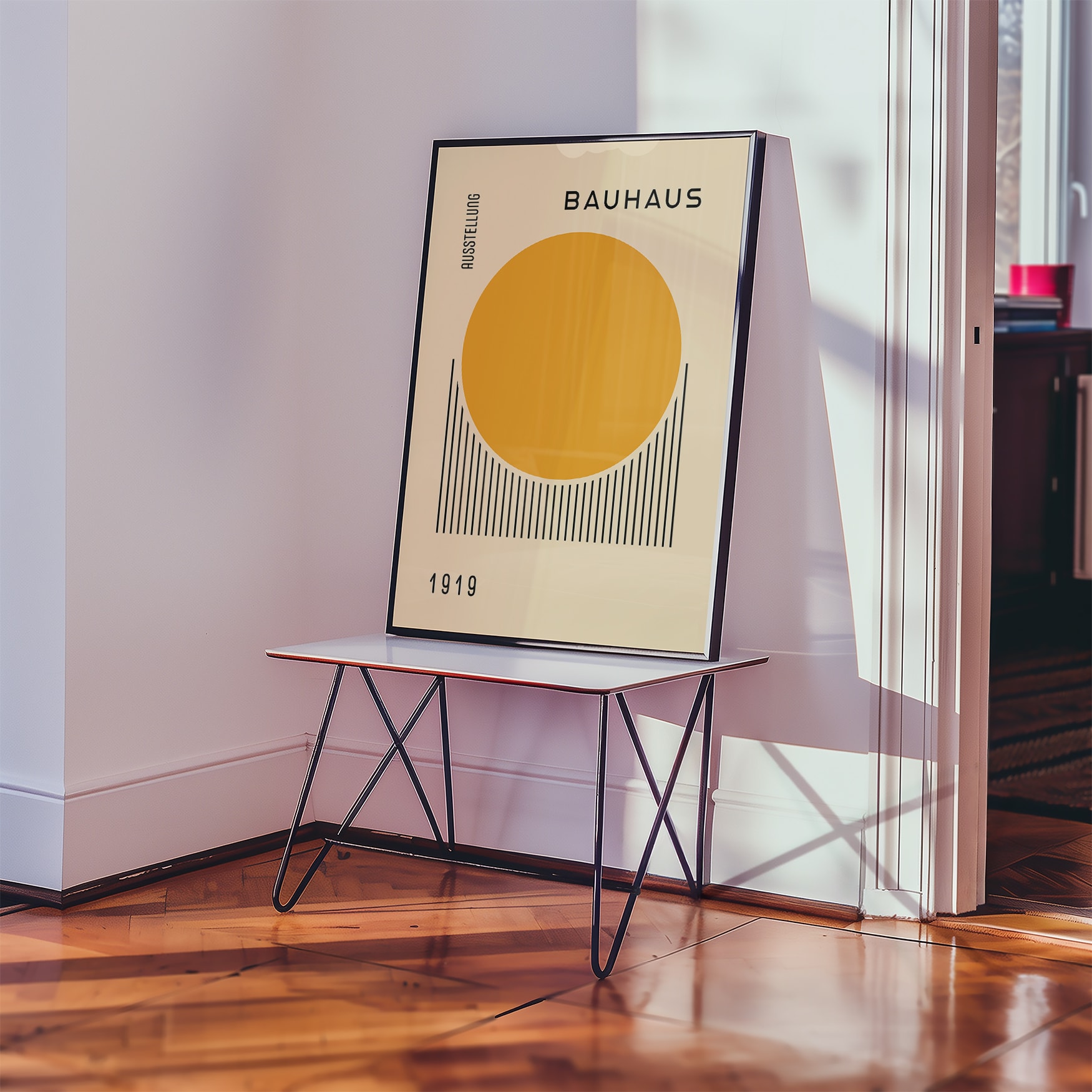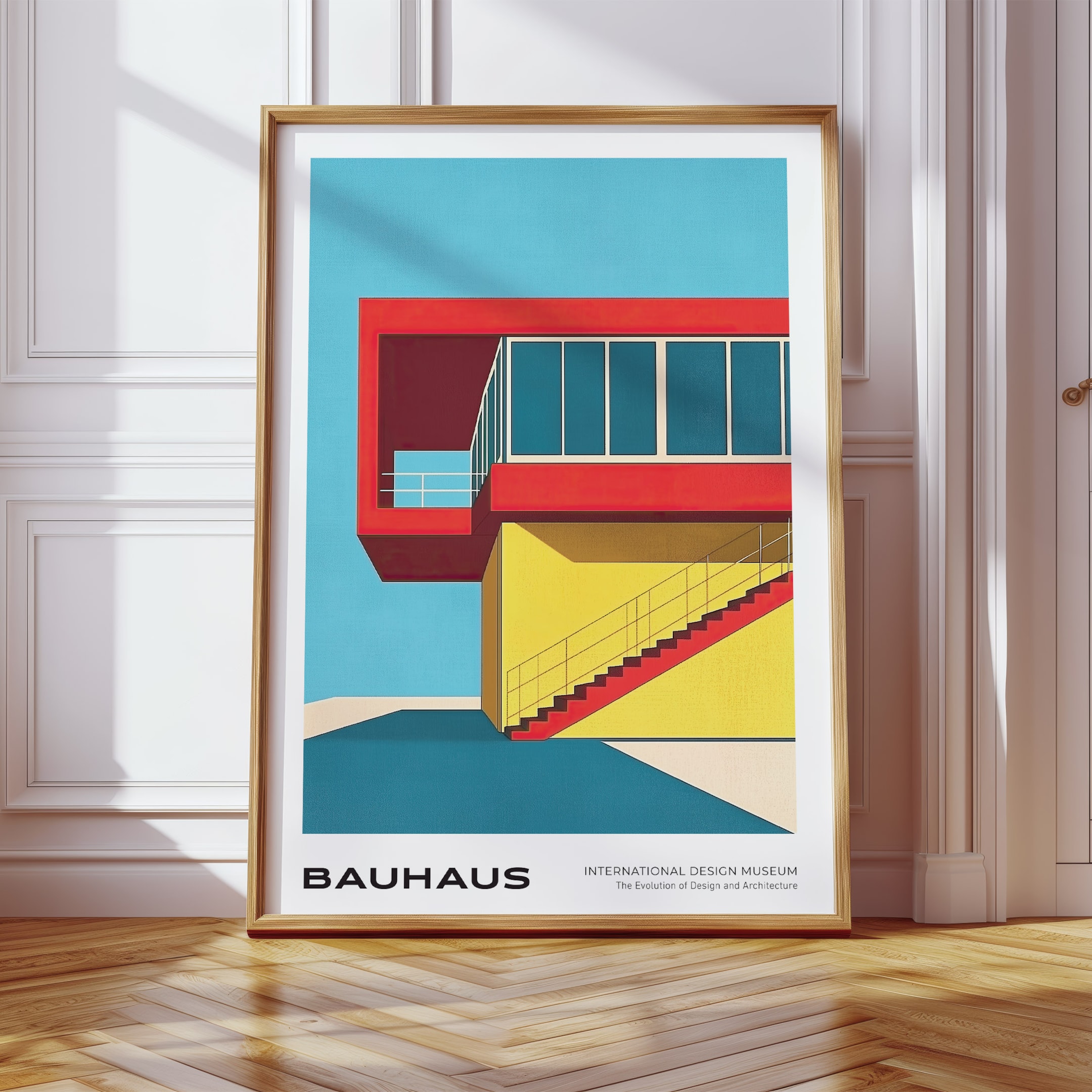Abstract geometric art uses geometric shapes to create images that don’t represent visual reality but evoke emotions and ideas. This unique art form emphasizes structure, color, and form, moving beyond traditional representations. This article explores its origins, key elements, influential artists, and lasting impact on modern design.
Key Takeaways
-
Abstract geometric art emerged from Cubism, focusing on non-representational forms and evolving through various styles including Suprematism and Constructivism.
-
Key elements of geometric abstraction include simple shapes, primary colors, and the manipulation of space to achieve harmony and emotional resonance.
-
Influential artists like Piet Mondrian, Wassily Kandinsky, and Sonia Delaunay have left a lasting impact on geometric abstraction, shaping its principles and applications in both fine art and design.
Exploring the Origins of Abstract Geometric Art

The rise of geometric abstraction marked a significant shift in the art world, as it veered away from depicting visual reality. This shift began with the advent of Cubism around 1907-1908, spearheaded by Pablo Picasso and Georges Braque. The primary goal of Cubism was to dismiss any traces of visual reality in art by concentrating on two-dimensional attributes, which effectively laid down the groundwork for geometric abstraction.
As it evolved, various European countries and Russia saw diverse stylistic manifestations within geometric abstraction. Suprematism emerged in Russia through Kazimir Malevich’s vision in 1915 and explored spiritual themes using non-representational forms against white space to capture a more profound spiritual essence. Meanwhile, constructivism arose out of Russian artists such as Vladimir Tatlin. This movement accentuated geometrical shapes across both planar surfaces and sculptural forms.
Throughout its progression, numerous artists have played pivotal roles in shaping geometric abstraction by committing themselves to abstract styles that foreground structure and vivid color delineated with distinct hard edges. As an artistic phenomenon influencing modern art history profoundly, this movement has continually pushed creative boundaries while questioning established perceptions about representational imagery.
Key Elements of Geometric Abstraction
At its core, geometric abstraction utilizes basic geometric forms and arranges them within a non-representational space to forge abstract compositions. Instead of trying to convey depth, these works emphasize the canvas’s flatness, inviting artists to delve into the essential nature of shape and hue without being tied down by realistic depiction.
Central figures in this movement, like Mondrian, considered vertical and horizontal lines as fundamental elements for creating equilibrium and structure within their artwork. Believing that art should reflect a universal balance through simplified shapes, Mondriad embraced a visual language composed of straight horizontal and vertical lines intersected at various angles. His creative journey ultimately led him to concentrate on these elemental lines paired with primary colors complemented by neutral tones.
The frequent use of primary hues—particularly blue, red, and yellow—is a hallmark characteristic in many pieces created under the banner of geometric abstraction. These bold colors meld with simple shapes resulting in artworks that have an emotional impact on viewers due largely to their embodiment of purity while encapsulating harmony intrinsic to abstract expressionism.
Influential Artists in Geometric Abstraction

The movement of geometric abstraction in art has been profoundly influenced by several artists who have redefined the medium with novel forms and hues. We are going to explore the pivotal roles played by three central contributors: Piet Mondrian, Wassily Kandinsky, and Sonia Delaunay. These individuals have each made a lasting impact on this artistic endeavor through their exceptional contributions to abstraction.
Piet Mondrian's Pure Geometric Forms
Piet Mondrian, renowned for his role in propelling the abstract art movement forward, made significant contributions as an influential painter. His distinctive use of primary colors—red, blue, and yellow—instantly engages viewers while underscoring color’s inherent purity. Gradually shifting towards pure geometric forms, he employed a combination of lines and color planes to eschew representational imagery.
In his artistic creations, Mondrian focused on arranging horizontal and vertical lines to forge balance and order within his works. The integration of these lines with primary colors gave rise to grid-like structures that encapsulate universal harmony—a concept deeply rooted in Mondrian’s practice of geometric abstraction that has left a lasting impact on artists across generations influencing contemporary art profoundly.
The eloquence and exactitude embodied by Mondrian’s artworks illustrate how geometric shapes can effectively articulate intricate notions and sentiments. His unwavering commitment to depicting global harmony through abstract forms stands as evidence of the potent allure held by geometrical abstraction—symbolizing both freedom from conventionality and harmonious expression in artistry.
Wassily Kandinsky's Visual Rhythm
Wassily Kandinsky drew profound inspiration from music, as he endeavored to invoke emotional and spiritual reactions using geometric abstract art. His objective was to forge a visual dialect capable of eliciting feelings similar to those stirred by music, rooted in his conviction that forms possess an innate resonance.
Employing geometric figures, Kandinsky imparted musical qualities and affective vibrations within his work. He held the view that color could stir spiritual experiences, effectively bridging the gap between art and music via rhythmic visual elements. This distinctive methodology has left an indelible mark on both peers and successors alike within the realm of artistic expression.
Through his creations, Kandinsky showcases the power of geometrical shapes in crafting works that reverberate with deep-seated emotional and transcendental significance. His pioneering application of color schemes alongside rhythmical visuals serves as continual motivation for artists delving into the synergies existing between artistic representation and melodic composition.
Sonia Delaunay's Fusion of Styles
Sonia Delaunay rose to prominence as an influential figure within the geometric abstraction movement, sharing this distinction with her spouse, Robert Delaunay. Her use of vibrant colors and energetic patterns demonstrated a seamless integration of art into everyday life that has had a lasting impact on contemporary design principles. She was adept at weaving geometric shapes through an array of mediums such as textiles, fashion designs, and paintings, exemplifying her versatility.
Her groundbreaking artistic approach continues to resonate with modern artists by establishing connections between classic elements of geometric abstraction and new forms of creative expression. Delaunay successfully merged the realms of fine arts and practical design work in both textile creation and sartorial ventures without neglecting her commitment to producing abstract geometrical canvases.
The inventiveness exhibited in Sonia Delaunay’s endeavors underscores the boundless potential inherent in geometric abstraction. Her skillful amalgamation across disparate styles and media formats endures as a significant contribution that permeates various sectors within both the realm of visual artistry and the sphere encompassing lifestyle aesthetics.
Techniques and Materials Used in Geometric Art
In the realm of geometric art, artists frequently utilize texture paste—a compound composed of acrylic paint blended with PVA glue and Plaster of Paris—to impart a robust and textured surface to their creations. When executing geometric compositions, it is common practice to employ sturdy backings such as MDF or wooden panels rather than pliable canvas materials in order to avoid any potential cracking that may arise due to the inflexible nature of texture paste. This selection process for substrates plays a critical role in preserving both the integrity and the lasting quality of the artwork.
To generate varying patterns and textures within their artistic pieces, practitioners often turn to implements like palette knives and combs. These instruments facilitate precision crafting intricate motifs which serve to amplify the allure embedded within each piece’s composition. The process involves blending together plaster, glue, and acrylic paint into a resilient concoction utilized for sculpting purposes before painting over it. This enhances not only visual but also physical depth.
The iconic style pioneered by Mondrian showcased an affinity for gridded configurations that accentuated equilibrium between intersecting lines juxtaposed against blocks saturated with color—each element working symbiotically toward achieving aesthetic concordance. In continuation after shaping geometry through initial sculpturing efforts, artists can refine textural elements using techniques such as layer application involving either additional paints or sealants—highlighting just how scrupulous one must be throughout material choices all along artistic creation pathways towards realizing truly captivating works enveloped within geometric artistry’s domain.
The Role of Space and Composition in Geometric Art

In the realm of geometric art, the skillful handling of spatial relationships is fundamental for infusing depth into a piece and directing the observer’s gaze through it. Artists frequently utilize negative space to bring attention to primary forms, adding to the overall unity within the artwork. This strategic approach in managing space contributes to a harmonious and visually satisfying composition that strengthens the interaction among its components.
The practice of geometric abstraction often involves leveraging symmetry alongside asymmetry in pursuit of visual balance and energetic contrast. Through meticulous placement of geometric shapes with acute awareness toward their interplay, artists can construct compositions that are simultaneously coherent and captivating. Such deliberate structuring signifies a core characteristic associated with geometrical abstract art.
Highlighting space and compositional elements underlines their significance in crafting an aura of equilibrium and structure within geometric artistry. The fusion between spatial interrelations, utilization of negative spaces, along with symmetrical arrangements empowers creators in producing impactful creations that strike a chord with those who experience them.
Contemporary Interpretations of Geometric Abstraction
The modern exploration of geometric abstraction in art continues to expand the horizons of this artistic form. By organizing various shapes within a composition, artists can stir emotions and affect how viewers interpret balance and expression. The use of repetition and rhythm contributes to creating an orderly progression throughout these geometric compositions.
Artists such as Saloua Raouda Choucair merge elements from science, spirituality, and mathematics into their work with geometric abstractions, effectively diminishing the distinction between art forms like architecture and poetry. Similarly, Rasheed Araeen applies his engineering expertise to craft minimalist sculptures that confront dominant Western art narratives while advocating for a decolonized viewpoint.
These creators’ works underscore the intertwined histories of abstract artwork by spotlighting fresh narratives that welcome diverse cultures along with alternative viewpoints. In challenging traditional art hierarchy structures, contemporary practitioners often incorporate commonplace materials alongside ornamental designs to question prevailing Western definitions regarding what constitutes fine arts.
Geometric Abstraction in Architecture and Design

The art of geometric abstraction has profoundly influenced the essence of modern architecture by prioritizing sleek lines, practical shapes, and a reduction in ornate detailing. The Bauhaus school, established in 1919 in Germany, played a pivotal role as an epicenter for advocating the integration of geometric abstraction into contemporary architectural design. This impact is noticeable in edifices such as New York’s Lever House that exhibit characteristics rooted in geometric abstract principles.
Through her work, which skillfully fused fine arts with utilitarian creations, Sonia Delaunay made notable strides both within the textile and fashion realms alongside her engagement with geometrically abstracted canvases. Her incorporation of this artistic approach enlivened material culture via bold hues and spirited motifs. Delaunay demonstrated how the theoretical notions underpinning geometric abstraction could be applied tangibly across varied aspects of daily existence.
Artists from today’s Middle Eastern and South Asian regions are producing playful yet innovative artwork that blends Western modernist ideals with Islamic geometrical traditions. These pieces resonate vibrantly within current cultural landscapes while paying homage to ancestral heritage. Monir Shahroudy Farmanfarmaian exemplifies this fusion through her artworks that marry Iran’s time-honored decorative techniques with the simplicity inherent to Western styles using materials like metal—crafting works whose interplay between light reflection and spectator perception bring images on walls strikingly alive.
Summary
Geometric abstraction is distinguished by its utilization of vivid colors and pristine geometric shapes, making a lasting impact on the realm of art. Its inception can be traced back to Cubism, with subsequent inspiration from groundbreaking Russian movements, culminating in its significant role within both modern and contemporary artistic spheres. Through ongoing evolution, it has explored new frontiers in creativity and articulation. Pioneers such as Piet Mondrian, Wassily Kandinsky, and Sonia Delaunay have each injected distinct insights and methodologies into this enthralling genre.
Artists engaging in geometric art employ meticulous techniques alongside advanced material choices to masterfully orchestrate space and composition within their works. In contemporary executions of this style, there’s a continuous dialog that interrogates tradition while embracing current societal viewpoints. Geometric abstraction doesn’t merely transform canvases. It permeates architecture and design substantially altering them too. Considering its historical progression confirms that the allure of geometric abstraction persists robustly across eras—and will undoubtedly continue stimulating admiration well into the future.









































